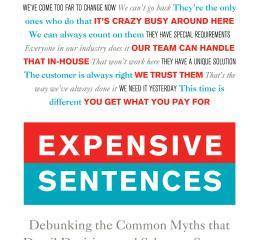The housing industry was part of the problem going into the 2025 legislative session, but comes out of it as part of the solution in a difficult time for the industry, a legislative and economic analyst told a group of homebuilders.
Jeremy Aguero, a principal at Applied Analysis, spoke last week to the Southern Nevada Home Builders Association about their support for a $250 million bill for attainable housing that was signed into law.
“There’s no group that cares more about giving housing to people who want them than the people sitting in this room, but that has been lost in some of the dialogue,” Aguero said.
Aguero said in the current economic climate it’s difficult to predict what will come next and how it affects the housing industry, but there are a lot of warning signs. Aguero showed a chart that reported a 45 percent probability of a recession in 2025 up from 22 percent in 2022.
“Consumers are strapped, and I don’t think there’s any doubt about that whatsoever,” Aguero said. “Incomes are not keeping pace with the cost of housing. The cost of construction continues to go up and consumers were stressed long before President Trump took office. The reality is we’ve been spending and taking on debt and interest rates have gone up. Consumers are now both strapped and scared and when consumer confidence goes down they don’t buy as much.”
Aguero said 82 percent of Americans believe owning a home is part of the American Dream but less than half of people can afford to purchase a median-priced home. That’s a percentage that keeps going down.
Not everything is bad. There is some good news as the economy continues to expand, unemployment is low, jobs are being created and inflation is stabilizing.
Las Vegas continues to be aided by migration to the city, especially from Californians that make up 33.8 percent of that total followed by 6.3 percent from Florida and 5.2 percent from Texas. Arizona is next at 4.3 percent followed by Washington at 3.9 percent and Utah at 3 percent.
While the economy is doing better than people believe, inflation over the last seven years continues to be a drag, Aguero said.
“Since 2018, the Consumer Price Index is up 28 percent since 2018, and that is a problem,” Aguero said. “That means a vast majority of households are stretched and their ability to spend is limited from housing to automobiles to taking vacations. Consumer confidence is near the lowest level we saw during the pandemic.”
Personal savings rates rose to 15.1 percent during the pandemic but are back down to 4.4 percent today. Debt per household is at the highest level in U.S. history, Aguero said.
“The delinquency rate is starting to come up,” Aguero said. “It’s skyrocketed because consumers don’t have enough money to make those payments. We can ignore it all we want, but the long arc of time suggests to us that if a small number of people control a large amount of the money it’s not good for any of us.”
That’s why it’s so important that interest rates eventually come down to help more people buy homes, Aguero said.
On a $400,000 home, a 6.7 percent interest rate today means a mortgage payment of $2,394 a month, some $694 more a month compared to when interest rates were 3.1% some three years ago.
“Economics 101 continues to exist today,” Aguero said. “Supply is low and demand is high and things like land put upward pressure on prices. How do you build a house for less than what homeowners are building today?”
The U.S. housing market has 500,000 more sellers than buyers, a 3-1 ratio while Las Vegas has a ratio of 1.9-1, Aguero said. Las Vegas, however, exceeds the national average when it comes to investors purchasing homes.
Nevada is No. 48 among states in homeownership rates at 57.5 percent and it’s easy to see why. It takes 19 years for the median household to save enough for a down payment on a home.
“What Gov. (Joe Lombardo) proposed and the Legislature passed recognized that there is a wide scope,” Aguero said. “When interest rates were 3½ percent the number of people who could afford a home was different when they were 6½ percent.”
Las Vegas households need nearly $50,000 more in income to be able to afford a home, Aguero said.
“There is no silver bullet and no easy way (to address the problem),” Aguero said.
It’s only going to get worse with Las Vegas having up to a five-year supply of land and trying to get additional releases from the federal government, Aguero said. Those efforts that have long been unsuccessful but are showing the best chance ever of getting more land released.
“The federal government owns (80 percent of the land in Nevada, and builders are trying to find ways and think creatively,” Aguero said.
The housing industry is important because it generates a huge amount of economic activity, Aguero said. It comes to $15 billion in Southern Nevada and $5 billion in wages and salaries.
Some 80,000 work in the homebuilding industry directly or indirectly, Aguero said. It’s not just important to those who work in it, however, but it’s important for every other person in the region because of those benefits, Aguero said.
“Every home built supports 2.6 jobs in our community overall,” Aguero said.
With concern about inflation and Trump’s tariffs contributing to it, Aguero said the Federal Reserve should keep interest rates where they are at for now. The economy can handle it for now, he added.
Tariffs are costly to builders.
Some $204 billion in goods is used in home construction and of that $14 billion is imported, Aguero said.








